You’ve no doubt seen the buzz about Boots Riley’s Sorry to Bother You, the summer movie that has been described as a comedy/fantasy/magic realism/sci-fi/dystopian film depending on who you’re talking to.
The film centers around an Oakland telemarketer named Cassius “Cash” Green (Lakeith Stanfield) who’s able to succeed in his job by putting on a white voice. It also features Tessa Thompson as girlfriend Detroit, Armie Hammer as boss Steve Lift, Danny Glover as Langston, Steven Yeun as Squeeze, Terry Crews as Cash’s uncle, and tons more in this star-studded cast.
Viewers have been captivated by Riley’s film debut because of its weirdness and originality from the get-go, in no small part thanks to the film’s one-of-a-kind fashion sense. (I mean, did you see Thompson’s MURDER KILL earrings?) I spoke to the movie’s costume designer Deirdra Govan, who broke down the afro-punk and Afrofuturism influences, creating looks that could properly represent a dystopian Oakland, and her close collaboration with Tessa Thompson. Some quotes are edited for length and clarity.
Sorry to Bother You has over 100 costume looks: a significantly high number for an independent film. Each one is carefully crafted, as distinct as the character wearing it. The man With No Name, the utilitarian but subtle Squeeze, Omari Hardwick’s Mr. Blank, a power caller. Each outfit told a story and Govan placed a big emphasis on being balanced, “a complete equanimity with all of the characters.”
Creating Sorry to Bother You’s Oakland
“I think the script itself really painted out a detailed roadmap of what would’ve informed me to design the look”, Govan explains. “The scene in Oakland is a sort of dystopian world, it’s an alternate universe, an alternate presence is what we’re saying—an alternate current times.” She adds, “Anyone that’s aware of what’s happening with urban neighborhoods, city neighborhoods—gentrification is real and the film really speaks to that. It’s a full mix of artistic creativity mixed with new gentrified hipsters, restaurants, it’s just a big scene.”
The space feels especially important in this film, when we think about how often media wants to use the fashion, style, and influences of black culture without any actual black creatives. Govan states that acknowledging these influences is crucial for her. “I think a lot of what afro-punk and Afrofuturism is just—the style is breaking the rules with the cultural identity of punk and blackness, that I think is really exciting,” she says. ”
“And it’s very important to acknowledge that because it’s real and that’s what was really attractive to me, because having spent a lot of time in Brooklyn and NYC, you see everybody and everything and inspiration is everywhere, it’s all around you. And Oakland is the same vibe. It’s unique, it’s interesting and people are doing their own thing in their own way style-wise.”
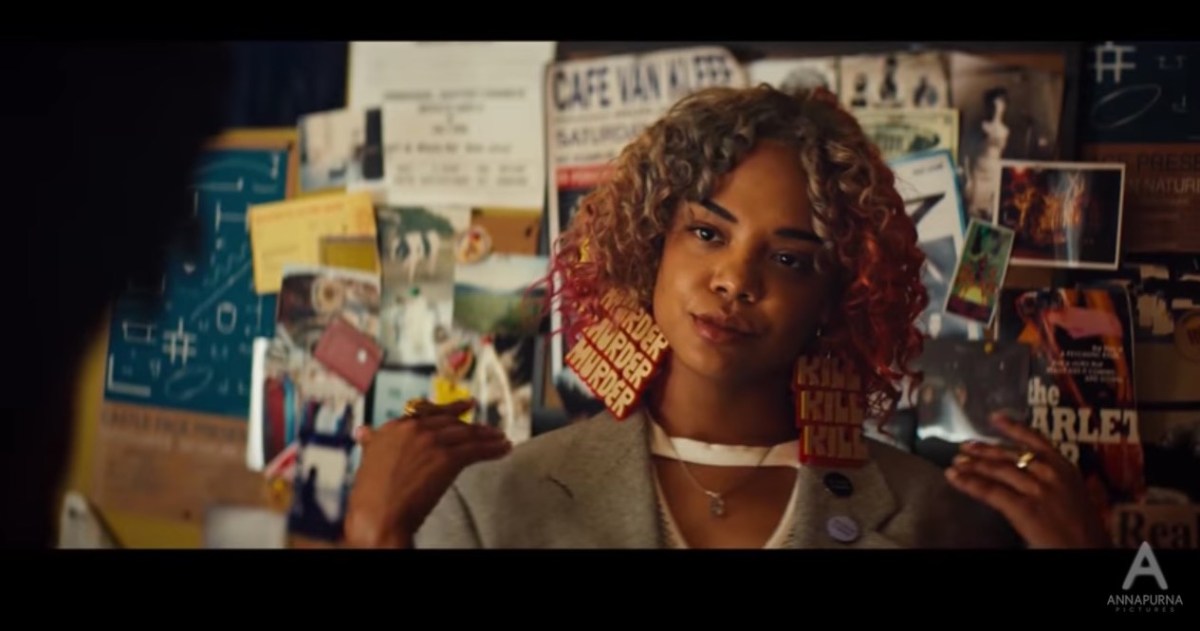
Tessa Thompson’s “Rule-breaker, Soul-shaker” Detroit
Govan, like all of us here at The Mary Sue, adores Tessa Thompson and is happy to gush about working with her. While she insists that all her costumes are her children and that she loves them all, I suspect she’s a bit partial to the politically outspoken, colorful, and expressive outfits Thompson shines in in the film.
When she tells me about creating Detroit’s look she says, “The real magic happens because of my relationship with Tessa. We just got each other, we tuned in.” When the designer showed Thompson her research and notes for the role. She calls the actress “really great.”
“It was a dream to work with her because she was so hands-on,” says Govan, “And she would go out on her own sometimes and find, you know, a jacket and then send me a photo and say, ‘Do you like this? What do you think about this?’ and I’m like, ‘Yes! Let’s do it! Absolutely, let’s do it. Let’s try it. Let’s play with it.'”
“Tessa’s character was a character that I’d say embodied girls I went to college with as well as myself,” says Govan. The designer’s description of Detroit is a combination of categories, the tension within those categories, and vintage:
“You know, creative rule-breaker soul-shaker, that’s what I’d like to say. Very conscious, politically and environmentally, but very creative to her core. Very true to her core. Not wanting to sell out—how do you climb the ladder of success in the art world that doesn’t necessarily look like you, but still stay true to yourself? All of those beats, all of those notes. She’s hand-crafted, she’s a vintage chick. She’s store-bought in some ways, but it was a really detailed approach when I was creating her character … It was a deep dive into, ‘How do you take something that’s an everyday look and turn it on its head?’ and that’s by just, kind of, borrowing some notes from a punk theme, borrowing some themes from afro-punk.”
Govan talks about The Free Store in Oakland, a thrift store her assistant showed her where people can donate items and leave donations. “I found some amazing oddities, like anything from fake flowers, to doll heads to like, army men,” she says, “It was just something that Tessa took on one of the jackets and glued them on and we painted them and it was just fantastic.”
“I resonated with her and I just couldn’t have asked for a better creative partnership with an actor like Tess,a because she is definitely someone who embraced it and, you know, wanted to make that character her own. It was a true collaboration across the board.”
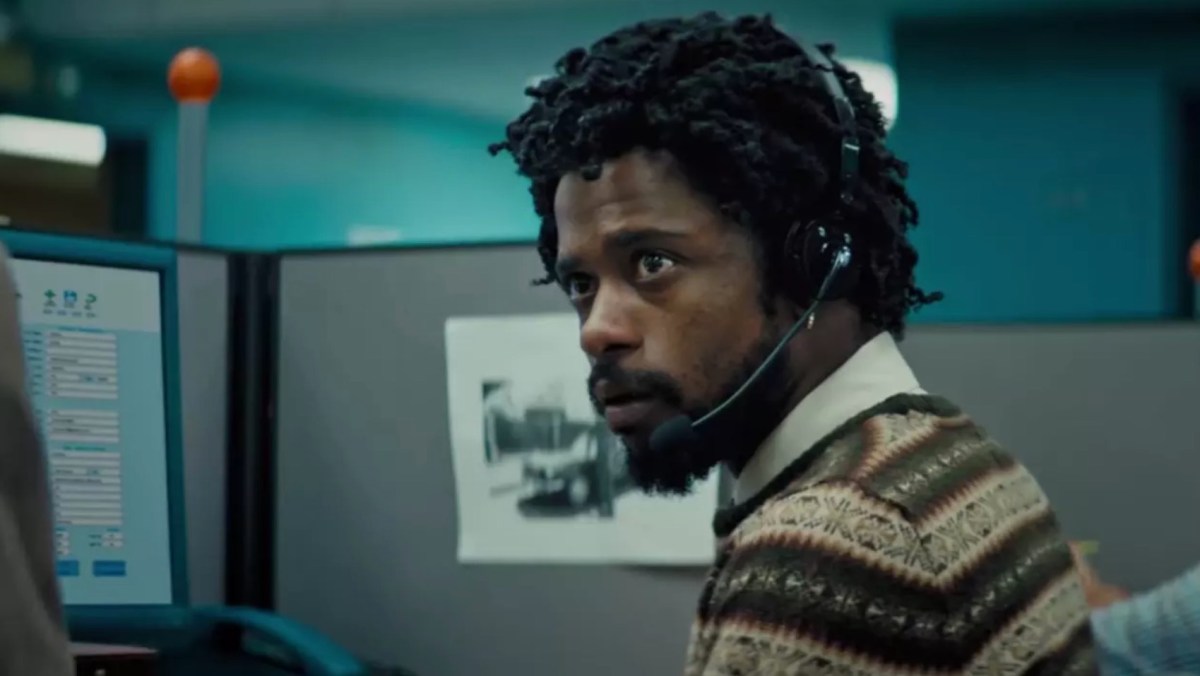
From mom’s sweaters to technicolor power caller: Lakeith Stanfield’s Cassius
While Cassius might be in an office, that doesn’t mean his style is boring: he has plenty of colors and textures to keep it interesting. “What is it about Cassius that Detroit—why is she with Cassius?” is one aspect of Cassius Govan is interested in. “The reason is that he is not contrived. He’s normal, everyday—there’s this thing where he still kind of dresses like his mom might’ve dressed him.”
“It’s kind of like, ‘Yeah, I’ve had this sweater since I was in high school. So what? It’s still cool. I love this sweater. I’m gonna wear it.’ That kind of thing, without being cheeky or cheesy or anything like that.” (Her description of Cassius’s sense of style is eerily like my own and I have to not take this as a personal drag.)
If you pay attention to Cassius’s outfits change as he moves up the corporate ladder, you’ll see a heightening of primary colors, detailing, and jewelry far from his early muted sweater. “He needed to start in a place where you could see his evolution into a power caller. Unfortunately, for some, when you’re trying to make a mark and appear a certain way, you have to kind of, ‘fake it till you make it’, so to speak. There’s a transition point from him working in his regular everyday, and he then he goes and becomes a power caller.”
“He starts to have a little bit more pizzaz and style,” she explains “and it’s kind of like, ‘OK I’m gonna show and prove to you I got the goods,” and that was all relative in his looks and style. His bling, his ring, his jewelry is definitely like, ‘Ok it’s show time,’ both figuratively and literally, because he wanted to show that he has made it. That needed to come through in his clothing … It evolves into this technicolor world which is the power caller.”
Collaborating with first time director Boots Riley
Govan calls her collaboration process with Boots Riley one of the most incredible experiences she’s had in her career. Having had 20+ years experience as a creative, that’s a big deal. “I say that in full honesty, it was incredible,” says Govan “Yes, he was a first time director and as with all first-time directors, they put everything they can imagine in the script. It’s just like an explosion. But with Boots, because I grew up with The Coup [Riley’s music group] in college, like, we were pretty much close to the same age, it was just like ‘Oh my God, I know this guy.'”
The designer describes his directing style as one that pushed her creatively: he was specific, demanding in the best way, and full of ideas. However, what she responded to most was his character. “I think the most important thing is who he is as a human being. As a person. His true self, you wanted to jump through hoops for this man,” Govan says. “He didn’t walk in with an ego. He was honest. He was honest with what he knew and what he didn’t know … it’s very rare to find that.”
“I just, I truly and I say it across the board, with you and with any interviewer,” Govan told me, “it was one of the best experiences I’ve had with a director. It was great.”
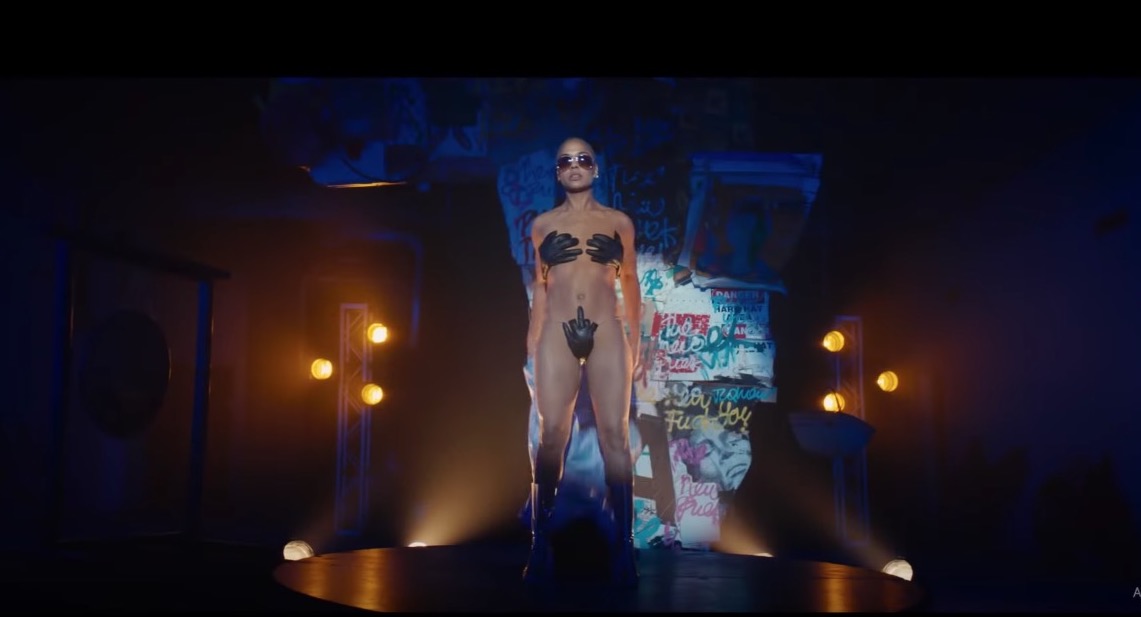
Not setting trends, but making change
Govan and I ended our talk with a discussion about the way design and social change intersect: a mission that she sees in all her works, not just Sorry to Bother You.
Govan’s work in costume design is phenomenal, but she’s also done design work on projects like The Equal Justice Initiative’s Legacy Museum, which uses interactive media to talk about racial inequality from enslavement to mass incarceration. As a designer with global experiences, she calls herself a “vessel” using her creativity for awareness.
“I made a concerted decision that I wanted do stories and tell stories on film visually, through clothing via set design, costumes, what have you, that I wanted to tell stories that mean something,” says Govan. “They would resonate, they would stay with the public conscience and really make you think differently about how people dress, how they think, and what that is.”
“I wasn’t trying to set trends, I’m not that person—I’m a deep, soulful person and when I take on a project, I take it on because something in it resonates with me. And that doesn’t necessarily mean that it’s a project of color, that doesn’t necessarily mean that it’s, you know, just so far off-kilter. Again, my experiences are not myopic. I have a global mind. I just think it’s really important as a designer to express a world-view perspective. And that’s not cultural appropriation in its ignorant form—it’s truly understanding what you’re trying to do. If you’re borrowing from a culture to tell a story this way, it needs to make sense. It’s not just because. It’s not happenstance. And I think, I get too excited about this because I’m a firm believer in that—that it’s important to be responsible in your creativity.”
“I kind of have this tagline for me,” she explains. “It’s telling stories of substance and style with style. That’s how I aim to do things, with integrity.”
If narratives of substance and style being told with style sounds like your kind of thing, Sorry to Bother You is out on limited release today, and will expand nationwide July 13th.
(image: Annapurna Pictures)
Want more stories like this? Become a subscriber and support the site!
—The Mary Sue has a strict comment policy that forbids, but is not limited to, personal insults toward anyone, hate speech, and trolling.—



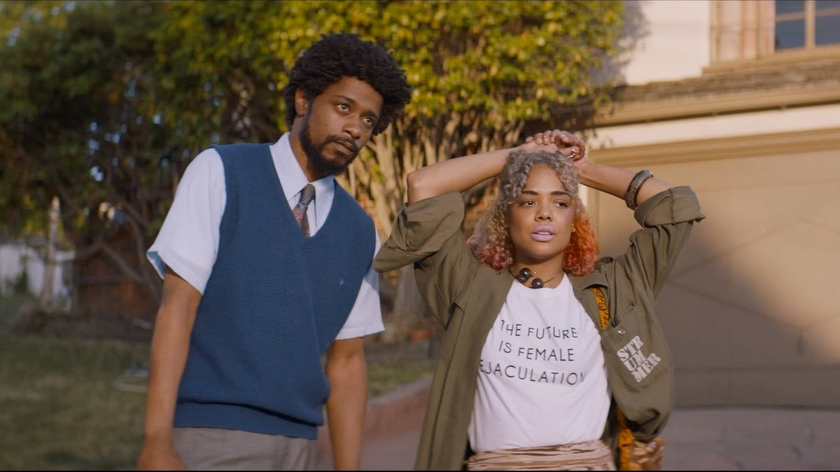




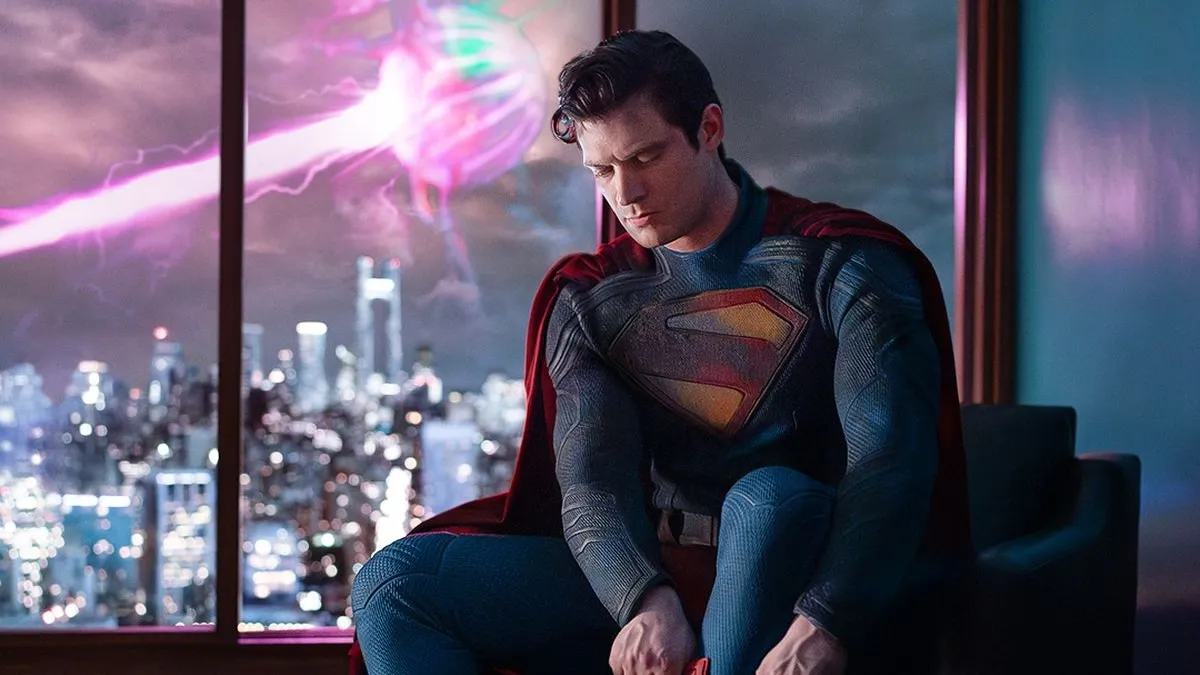
Published: Jul 6, 2018 11:06 am